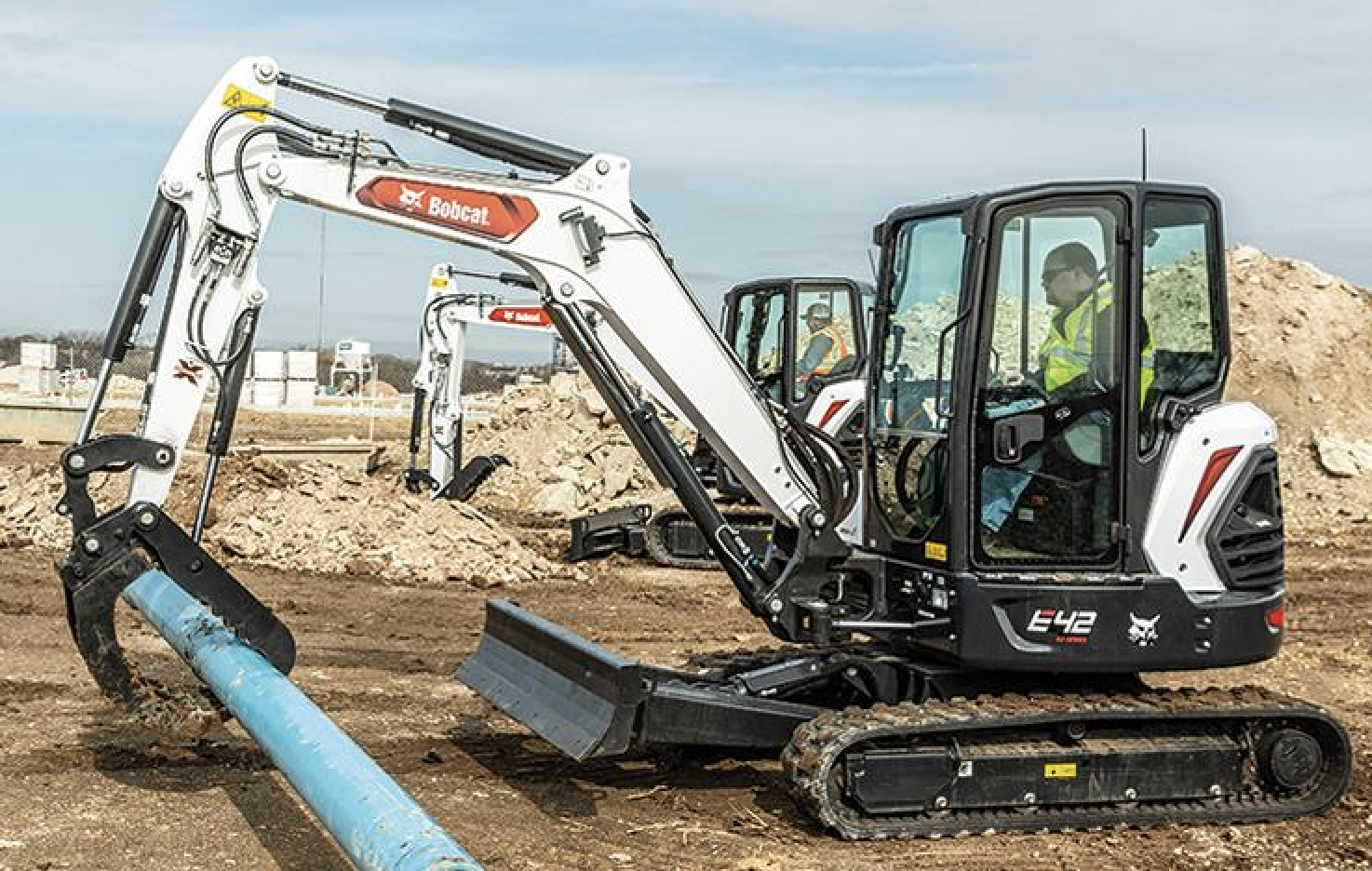What is a Digger (Excavator)?
Excavators also known as diggers (including micro and mini diggers) are heavy construction equipment consisting of a boom, dipper (or stick), bucket and cab on a rotating platform known as the "house". The house sits atop an undercarriage with tracks or wheels. They are a natural progression from the steam shovels and often mistakenly called power shovels. All movement and functions of a hydraulic excavator are accomplished through the use of hydraulic fluid, with hydraulic cylinders and hydraulic motors. Due to the linear actuation of hydraulic cylinders, their mode of operation is fundamentally different from cable-operated excavators which use winches and steel ropes to accomplish the movements.
What are the most common uses for excavators (diggers)?
Digging holes
Creating trenches
Demolishing sheds or smaller structures
Repairing sewer lines
Flattening landscape
Removing stumps
Digging garden ponds
Ploughing snow
Digging irrigation ditches
Digging of trenches, holes, foundations
Material handling
Brush cutting with hydraulic saw and mower attachments
Forestry work
Forestry mulching
Construction
Demolition with hydraulic claw, cutter and breaker attachments
General grading/landscaping
Driving piles, in conjunction with a pile driver
Snow removal with snowplow and snow blower attachments

Types of Compact Excavators (Mini and Micro Diggers)
A compact or mini (digger) excavator is a tracked or wheeled vehicle with an approximate operating weight from 0.7 to 8.5 tonnes. It generally includes a standard backfill blade and features independent boom swing.
Micro Diggers
Micro diggers are highly reliable; their lightweight, short rear end nature enables effective operation even in cramped spaces. They have a hydraulically adjusted track gauge, which ensures that a 1ft micro excavator can minimize their track width to 760mm to pass through most door frames.
This small scale means that a microdigger can enter buildings that a big digger will otherwise not be able to fit into. If your project needs to be used indoors, the micro digger is the digger of choice. Because to their compact scale, microdiggers are often silent because of their smaller motors, making them suitable for suburban areas.
Micro diggers are also very easy to learn how to work, with intuitive and quick controls. However, due to their smaller size, their versatility is not limited and they do give the same 360° swing and a number of attachments are available. So, a micro digger is a perfect choice for small-scale projects or indoor construction work.
H2 1.5ft Mini Digger
Mini diggers are a common alternative in the building industry due to their ability to perform and run in small spaces that could not be done by a larger machine. This equipment can allow effective use of concrete removal, tree planting, light demolition and reconstruction.
A 1.5ft mini digger is an efficient digger but light enough to run on sensitive terrain, risking less disruption than its larger siblings. Being lightweight and flexible, the hydraulic adjustable gauge helps you to reach constricted locations. This digger is suitable for landscaping, design and civil engineering projects.
These diggers are also known as compact excavators. Since they are smaller than other types of comparable devices, they are typically reserved for small to medium-sized ventures. Not only used for drilling, they are also used for demolition purposes.
3FT Mini Digger
3FT Mini Digger
P: 3ft mini diggers have a high degree of productivity. The short tail swing on this machine makes this system suitable for operating in tight spaces, and the hydraulic boom makes it easy to operate alongside a wall, so you are not too limited in your operation.
The force of the bucket and the depth of digging in this digger are among the highest in the industry for higher productivity. The user-friendly fingertip controls allow the most delicate work to be done easily and precisely while in the driver's seat.
Type of Diggers We Use
At MD Digger Hire Sussex we use Bobcat Micro and Mini Diggers, as we feel that the quality of the diggers that Bobcat puts out are far superior to other competitors.
Call us or Fill our Form Out Today.
Copyright © 2021 MD Digger Hire Sussex